Keynote Forum
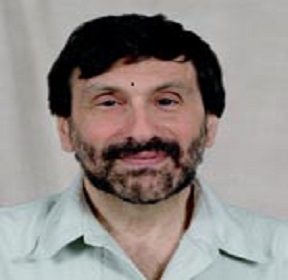
Emanuel Goldman
Rutgers-New Jersey Medical School USATitle: The mistaken belief that fomites play a significant role in transmission of respiratory viruses
Abstract:
For many decades, the scientific community has considered fomites (inanimate surfaces and objects) as significant vehicles for transmission of respiratory viruses. This presumption was the conventional wisdom when the COVID-19 pandemic began, and public health guidance led to a great deal of effort and expense in disinfecting fomites in public places as well as in private settings, including mail, packages, and products bought in stores, such as grocery stores. The scientific basis for this presumption for SARS-CoV-2 as well as almost all other respiratory viruses was the environmental survival of viable viruses on surfaces monitored over a period of time following inoculation of the surface. In July 2020, I published a Comment in Lancet Infectious Diseases challenging this presumption. The title of the Comment was "Exaggerated risk of transmission of COVID-19 by fomites". The crux of the argument was that the concentrations of virus used was way too high in experiments showing long survival of the virus on surfaces. Since the virus decays with a defined half-life, the more you start with, the more half-lives you have to go through before reaching an endpoint of less than one infectious virus particle on the surface. In other words, the experiments that were the basis for concern about fomite transmission of COVID-19 were unrelated to real-world conditions. It turns out to be even worse than I originally thought. Experiments from my lab recently published in Applied and Environmental Microbiology show that an enveloped virus, bacteriophage Phi6, protects itself from environmental decay at higher virus concentrations. Phi6 has been suggested for use as a non-pathogenic surrogate for SARS-CoV-2, which is also an enveloped virus. Therefore, the design flaw in experiments measuring surface survival of SARS-CoV-2 is not just that too much inoculum requires more half-lives to go through – the larger inoculums extend the half-lives as well. Results published in 2005 with the original SARSCoV- 1 confirm that larger inoculums extend environmental half-lives of the virus. The Lancet ID Comment was picked up by the press. A columnist from the Atlantic coined the term "hygiene theater" in an interview about the Lancet ID Comment. Other research corroborated the assertions in the Comment, and Nature posted an editorial citing the Lancet ID Comment, calling on Public Health agencies to emphasize aerosols and stop warning about fomites. Several months later, the United States CDC did just that, estimating the chance of transmission by fomites as less than 1 in 10,000. The lessons we have learned in the battles over COVID-19 transmission inform the direction the field should take when considering the transmission of other respiratory viruses. In almost all cases, the evidence supporting fomite transmission is based on the same kinds of artifactual experiments. A seminal paper almost 35 years ago demonstrated that rhinoviruses, the major cause of the common cold, are at least to a first approximation entirely transmitted by air and not fomites, a paper often overlooked in contemporary publications. Nevertheless, publications continue to appear promoting fomite transmission as a risk for SARS-CoV-2 and other respiratory viruses. This lecture describes why these publications should not raise concern over the possibility of fomite transmission in the real world.
Biography:
Emanuel Goldman graduated with honors from the Bronx High School of Science in 1962, received a B.A. cum laude from Brandeis University in 1966, where he was a chemistry major, and he completed his Ph.D. in Biochemistry at M.I.T. in 1972. He did postdoctoral research at Harvard Medical School and at the University of California, Irvine, before joining the faculty of New Jersey Medical School in 1979, where he rose through the ranks to Professor in 1993. Among his awards and honors, he was a Damon Runyon Fellow, A Lievre Senior Fellow of the California Division- American Cancer Society, and a recipient of a Research Career Development Award from the National Cancer Institute. Among his service activities, he was an officer and organizer of the NY-NJ Molecular Biology Club, served as a full member of an American Cancer Society Study Section, and continues to serve on the editorial boards of "Protein Expression and Purification", and "Applied and Environmental Microbiology". He was also twice elected by his colleagues to serve as President of the university chapter of the American Association of University Professors, and he was elected to serve as Vice President and subsequently President of the Faculty Organization of NJMS. He published a Comment in the Lancet in July 2020 that began the process of reversing the mistaken belief that COVID-19 was transmitted from surfaces.
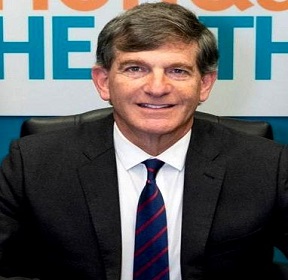
Scott A. Rivkees
Brown University School of Public Health USATitle: Health Care Providers are Now the Frontline for COVID-19 Response: Are We Ready?
Abstract:
The COVID-19 pandemic continues to evolve as the virus mutates to more contagious forms. With the new waves of new variants and continuing federal effort to address COVID-19, the pandemic response is shifting to state and local levels. We all need to recognize that health care providers are and will be playing an increasingly important role in COVID-19 control and treatment. Measures to fight COVID-19 are widely available to healthcare providers, including tests, vaccines, monoclonal antibodies, and antiviral medications. Our challenge is to help practitioners take advantage of the ample tools and guidance available to fight COVID-19. Health care providers can prescribe anit-viral agents. Health care providers can offer protective monoclonal antibodies to immunocompromised patients. Health care providers can register as COVID-19 vaccine providers. It is recognized that the medical community has endured much during this pandemic. It is also recognized that we can continue to step up.
Biography:
Rivkees is a Professor of the Practice of Health Services, Policy, and Practice in the School of Public Health. He served as Florida's State Surgeon General and Secretary of Health from 2019 to 2021. Before moving to Florida, he served as a professor of pediatrics with tenure at Yale University. Dr. Rivkees has had more than 35 years of continuous research funding from the National Institutes of Health. He was responsible for the safety alert on liver toxicity caused by the antithyroid drug propylthiouracil. This led to major international treatment practice changes.
Speakers

Martha Chadyiwa
University of Johannesburg South AfricaTitle: Workers exposure to respirable crystalline silica dust at selected coal fired power stations in Bethal, Mpumalanga province, South Africa
Abstract:
Workers in coal-fired power stations engage in a range of work tasks or processes which may involve handling or exposure to respirable dust, including coal dust or coal fly ash. Recent studies have shown that crystalline silica exposure remains one of the detrimental concerns in mining, construction and general industry. A quantitative study was conducted to determine employee’s level of exposure to respirable crystalline silica at a coal fired power station in Mpumalanga Province, South Africa. A total of 34 employees participated in the study. The study revealed that the male employees were most predominant in the coal handling plant as compared to the females. 81.2% (n=27) of the respondents were found to be males while 18.8% (n=7) were found to be females. The study determined the mean exposure value of 0.969 mg/m3 for respirable coal dust which was found to be below the recommended occupational exposure limit (OEL) of 2 mg/m3 as set by the Department of Labour (DoL). While the study determined the mean exposure value for crystalline silica as 0.184 mg/m3 which was found to exceed the recommended OEL of 0.1 mg/m3 as indicated by the DoL. Results from this study confirms occupational exposure to crystalline silica, which is a well-established hazard in mining, therefore, use of personal protective equipment should be recommended.
Keywords: occupational exposure, crystalline silica, coal dust, exposure levels.
Biography:
Martha is a registered EHP with the Health Professions Council of South Africa. She is a holder of a Bachelor of Science Degree in Environmental Health. She also have an MBA in Environmental and Energy Management from Twente University. She completed an Honors in Leadership at the University of Johannesburg. She is currently registered for a PhD in Public Health at Witwatersrand University focusing on Occupational Health injuries. She was involved in the creation and content development on the online Master of Public Health at the University of Johannesburg. Currently she is an Online Facilitator on the Sample Abstract Template Master of Public Health at the University of Johannesburg. She has been an Adjunct lecturer at the Witwatersrand University and MANCOSA for more than three years. She has published papers on occupational and environmental health in internationally accredited journals. She has supervised more than 16 Masters Students to completion in her career. Her niche area of research is occupational and environmental health. She also involved with research that is focusing on how artificial intelligence is impacting occupational and environmental health. She was recently recognized as one of the top fifty influential women in Science, Technology, Engineering, and Mathematics (STEM) in South Africa for her contribution in the subject matter.
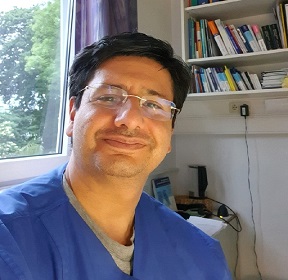
M. Lavae-Mokhtari
Ibbenbburen General Hospital GermanyTitle: Effective secretolytic and bronchodilatativ Strategies by Prolonged Weaning by COPD GOLD D Patients on Respiratory Intensive Care Unit after quantitative based Lung Computertomographie and Lung Volume Reduction Surgery bei massive Emphysema
Abstract:
A meta-analysis of studies published in the 1990s calculated the incidence of VAP (ventilator-associated pneumonia), which is equivalent to 16.5 cases per 1,000 patient days. Attributable mortality due to VAP was estimated to be 20-40%, although the range in different studies was very broad. Healthcare costs related to VAP seem to be remarkable in particular with regard to multidrug-resistant pathogens. VAP is an infection frequently caused by Pseudomonas aeruginosa, Haemophilus spp., and Klebsiella spp. or by Staphylococcus aureus. Anaerobes are a rare cause of VAP. Patients with COPD GOLD D and massive Emphysema, who undergo a Lung Volume Reduction Surgery by prolonged Weaning and long-term treatment on intensive care units, after a quantitative-based Lung Computertomographie to prevent VIDD need an intensive and efficient secrtlytic additionally to bronchoscopy by presenting bronchospasms at the same time. On our Respiratory Intensive Care Unit, we use a Dymedso Frequenzer with sound wave (45 Hz) from the company inspiration medical four times daily in combination with six times deeply bronchodilatativ Aeronep Inhalation from the company Aerogen to reach a 17% lung disposition in compared to 3% by conventional nebulizer. We optimize this by an LALMA/LABA fix combination (Glycopyrroniumbromid/Formoterol) via tracheal cannula from the company AstraZeneca with AEROSPHERE Delivery Technology. Active ingredient particles are connected on aerodynamic Phospholipid particles, which are a natural carrier substance and a component of lung surfactant. Previous studies with health persons could show lung disposition of 38%. The safety and efficiency were demonstrated in phase 3 study PINNACLE 1 and 2 and long-term data of safety and effectiveness in PINNACLE 3.
Biography:
M Lavae-Mokhtari is a consultant in the Respiratory Intensive Care Unit in General Hospital Ibbenburen in Germany since 2013. He has seven publications, 17 national and international poster publications, one book publication, and three scientific international and one national oral presentation. He has 152 citations and a 17.48 RG Score by research gate. He is a member of the German Respiratory Society, Section Intensive-Care and Ventilation Medicine, European Respiratory Society, Section Intensive-Care and Ventilation Medicine, and Section Thorax oncology and German Interdisciplinary Society of Outpatient Ventilation.
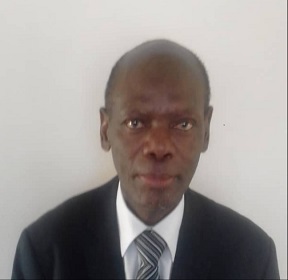
Nightingale Syabbalo
University of Fiji FijiTitle: The role of interleukin-17 in the pathogenesis and treatment of severe neutrophilic asthma
Abstract:
Asthma is a common chronic airway disease affecting approximately 334 million people worldwide, and about 7 million children globally. Approximately 10% of patients with asthma have severe refractory disease, which is difficult to control on high dose inhaled corticosteroids and long-acting β2-agonists (LABA). Half of these patients have neutrophilic asthma. Neutrophilic asthma is a phenotype of asthma characterized by severe and persistent airflow obstruction, frequent exacerbations and hospitalization, and is associated with status asthmaticus, and fatal asthma. Immunopathologically, it is characterized by the presence of high levels of neutrophils in the lungs and airways. Interleukin-17 secreted by Th17 cells, plays a key role in the pathogenesis of neutrophilic asthma by expressing the secretion of chemoattractant cytokines and chemokines, such as IL-8 for the recruitment and activation of neutrophils. Activated neutrophils produce an oxidative burst, releasing multiple proteinases, reactive oxygen species, and cytokines which cause airway epithelial cell injury, inflammation, airway hyperresponsiveness, and remodeling. Most patients with neutrophilic asthma are unresponsive to high dose inhaled corticosteroids, and to eosinophilic asthma targeted biologics, such as omalizumab (anti-IgE), mepolizumab, reslizumab (anti-IL-5), benralizumab (anti-IL-5R), dupilumab (anti-IL-4Rα), tezepelumab (anti-TSLP). Blockage of IL-17 with monoclonal antibodies has not been successful in the precision treatment of neutrophilic asthma. Brodalumab, a monoclonal antibody against the IL-17 receptor did not meet end point in clinical trials. Similarly, blockade of IL-8 receptor CXCR2 produced minimum asthma control. Treatment of neutrophilic asthma is challenging. The most appropriate approach is to use single inhaler tripple therapy incorporating a long-acting muscarinic antagonist; and macrolide antibiotics, such as azithromycin. Accompanying airway remodeling and airway muscle hyperplasia and hypertrophy may require bronchial thermoplasty (BT). This bronchoscopic therapy is effective in patients with severe, uncontrolled asthma irrespective of the phenotype. BT has been shown to reduce the severity of asthma symptoms, exacerbations, and to improve lung function, and health-related quality of life. BT has also a corticosteroid-sparing effect and can allow patients to wean from glucocorticoids.
Biography:
Nightingale Syabbalo is a Pulmonologist, and Clinical Respiratory Physiologist by training, and obtained his postgraduate training at St. George’s Hospital Medical School, University of London, UK. He was trained by one of the international distinguished Respirologists of our times. Nightingale has worked as an academician, Consultant Physician, and Clinical Researcher in several counties, including Canada, Kuwait, Oman, South Africa, and Zambia. He has published extensively in high-impact medical journals, and is an Editorial Board member of twenty-two journals in Pulmonology and Respiratory Medicine; and a reviewer of four journals in Thoracic Medicine, Respiratory Research, and Internal Medicine. Prof. Syabbalo’s current area of research focuses on the role of interleukins in the pathophysiology and treatment of severe asthma. He has also interested in the mechanisms of interleukins-1β in the pathogenesis and treatment of pericardial syndromes.

Gediminas Mainelis
Rutgers University USATitle: SARS-CoV-2 Aerosols in Homes of COVID-19 Infected Adults: Presence and Control
Abstract:
Introduction. One key challenge is to reduce secondary attack rates among household contacts, which are estimated by the CDC to be as high as 50%. In addition to close interpersonal contact, emerging evidence suggests that airborne transmission is important for spreading SARS-CoV-2 infections in enclosed and/or poorly ventilated spaces, such as homes. Since one of the virus transmission routes is airborne, we hypothesized that its spread could be controlled using portable air cleaners (PACs). However, the existing data are sparse and based on scripted scenarios. Here, we report the first naturalistic intervention study to reduce SARS-CoV-2 airborne transmission using PACs with HEPA filters in the homes of COVID-19-infected individuals.
Methods. Subjects were recruited in the fall/winter of 2020-2021 through an email flyer delivered at the time of notification of test positivity. Saliva screening at the time of the first visit verified continued positivity for all reported subjects. 24-hr air samples of total aerosols were collected in the isolation room (the primary room used by the subject) and the common room (a secondary room) on PTFE filters using open-face filter holders (CH Technologies, Westwood, NJ, USA and SKC, Inc. Eighty-Four, PA, USA) or modified IMPACT filter samplers (SKC Inc.) and Leland Legacy pumps (SKC Inc.) operated at 10 L/min. The PAC was placed only in the primary room, away from any walls. In one 24-hr period, the PAC was operated with a HEPA filter and, during the other, without a filter ("sham" period). The filtration and treatment order was randomized. Samples were analyzed by RT-PCR for expression of three distinct SARS-CoV-2 genes: N, ORF1ab, and S. Samples were considered positive if any one gene and internal control (MS2 phage) were detected at Ct ≤ 40.
Results and Conclusions. Samples were collected in the homes of 17 individuals with newly diagnosed COVID-19 infection. Seven out of sixteen (44%) air samples in primary rooms were positive for at least one gene during the sham period. Seven out of fifteen (47%) air samples in secondary rooms were also positive during the sham period. The data also suggested a strong association between the amount of viral RNA in an infected person's saliva and the likelihood of airborne virus being detected in the primary room. During the filtration period, the proportion of positive aerosol samples decreased to four out of sixteen residences (25%) (p=0.223).
Conclusions
Thus, our results show that SARS-CoV-2 RNA is common in the home air of COVID-19 patients. Therefore, using air cleaners to reduce SARS-CoV-2 exposure should be considered part of guidance for caring for COVID-19 patients in residential and community-based indoor environments, especially in situations of limited space and resources.
Acknowledgments
Supplement to NIEHS P30 Center ES05022, NIH/CATS (UL1TR003017), NIEHS Training Grant in Exposure Science (1T32ES019854; Dr. Nirmala T. Myers), and NIOSH ERC (T42OH008422; Dr. Frederic T. Lu).
Recent Publications
- Laumbach, R., Mainelis, G., Black, K., Myers, N.T., Ohman-Strickland, P., Alimokhtari, S., Hastings, S., Resende, A.D., Legard, A., Calderón, L., Lu, F., and Kipen, H. (2021) Presence of SARS-CoV-2 in residences of adults with COVID-19, Annals of the American Thoracic Society, 19(2): 338. Link.
- Myers, N.T., Laumbach, R., Black, K., Ohman-Strickland, P., Alimokhtari, S., Legard, A., Resende, A.D., Calderón, L., Lu, F., Mainelis, G.*, and Kipen, H. (2022) Portable Air Cleaners and Residential Exposure to SARS-CoV-2 Aerosols: A Real-World Study, Indoor Air, 32(4). Link.
- Grogan, S. and Mainelis, G. (2022) Effect of Sampling Duration on Culturable and Viable Bioaerosol Determination when using Rutgers Electrostatic Passive Sampler (REPS), Journal of Aerosol Science, 106066. Link.
- Myers, N. T., Han, T.T., Li, M.-L., Brewer, G.; Harper, M., Mainelis, G. (2021) Impact of Sampling and Storage Stress on the Recovery of Airborne SARS-CoV-2 Virus Surrogate Captured by Filtration, Journal of Occupational & Environmental Hygiene, 18 (9), 461-475. Link.
- Metaxatos, A., Manibusan, S., and Mainelis, G. (2022) Investigation of sources, diversity, and variability of bacterial aerosols in Athens, Greece: a pilot study, Atmosphere, 13(1), 45. Link.
Biography:
Gediminas “Gedi” Mainelis is a Professor in the Department of Environmental Sciences at Rutgers, the State University of New Jersey, USA. He has a Bachelor’s degree in physics from Vilnius University, Lithuania, and a Ph.D. in Environmental Health from the University of Cincinnati, Ohio, USA. His research focuses on various aspects of bioaerosol science, including sampling and analysis methods, exposure assessment, and airborne microbiomes. Over the past years, his research expanded to investigate exposures to manufactured nanoparticles and explore indoor air issues. Several of his current projects focus on COVID-19 issues. His research efforts have resulted in more than 110 peer-reviewed publications, book chapters, and several patents. In addition, multiple papers from his group have been included in the most downloaded article lists of various peer-reviewed journals. Dr. Mainelis has served as Chair of the Bioaerosols and Health-Related Aerosol working groups of the American Association for Aerosol Research (AAAR). He is currently an editor (associate) of the Aerosol and Air Quality Research journal. Prof. Mainelis is a recipient of the Research Excellence Award from Rutgers University and the Lyman A. Ripperton Environmental Educator Award presented by the A&WMA.

Brian Regan
Grignard Pure Company USATitle: A Story About Chemicals, Science and Public Health
Abstract:
The treatment and distribution of drinking water for safe use is a landmark achievement of the 20th century. Up through the end of the 19th century, typhoid fever, dysentery, and cholera killed thousands of Americans every year. Beginning in 1908, cities began treating drinking water with chlorine. Drinking water chlorination and filtration have helped to virtually eliminate these diseases in the United States. The U.S. Centers for Disease Control and Prevention (CDC) regards the disinfection of drinking water as one of the 10 most significant public health advances of the 20th century. Almost all drinking water systems in the United States that disinfect their water use some type of chlorine-based process, either alone or in combination with other disinfectants. What public health achievements will define the 21st century? With the arrival of COVID-19 in 2020, a group of scientists and engineers came up with an exciting idea. In researching the safety of triethylene glycol(TEG), one of the primary ingredients in lighting effects products, they discovered that TEG was effective at killing harmful microorganisms. These scientists and engineers came to think that it would be possible to make a product that could be released into the air at levels that would kill the virus that causes COVID-19. Further testing confirmed its effectiveness against a wide array of viruses, bacteria and mold. 1.1 million US deaths later, COVID has delivered a stark reminder of how unhealthy our indoor air really is, with the presence of airborne pathogens so prevalent in our schools, homes, workspaces, and public places. Could a solution powered by TEG prove to be a milestone 21st-century public health achievement in the effort to make our indoor air healthier and safer against future pandemics, hospital-acquired infections, sick building syndrome, and the common cold?
Biography:
Brian T. Regan serves as Chief Strategy Officer for Grignard Pure, LLC, an innovative science and technology company developing next-generation solutions for eliminating airborne pathogens in all indoor environments from healthcare, to food processing, to workplaces, schools, and homes. He is responsible for shaping and executing Grignard Pure’s go-to-market strategy, integrating science, IP, regulatory, product development and partner engagement into successful implementation. Prior to joining Grignard Pure in January 2021, he spent twenty-five years working with organizations from start-ups to Fortune 500 companies, helping position them for optimal competitiveness in the markets they serve. Among those companies he counseled include Virgin, EMC, CA Technologies, Intuit, MongoDB, Docusign, and Philips.
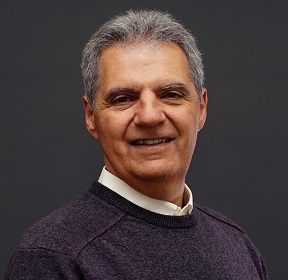
Jack Caravanos
New York University USATitle: Challenges in the Epidemiological Evaluation of COVID Interventions
Abstract:
Why is it that we are having so much trouble answering the very basic question: What COVID interventions have proven to be most effective? To answer this question, we need to study population and their behaviors; meaning we need epidemiology. As the COVID epidemic progressed we implemented what seemed be reasonable actions; i.e. social distancing, hand hygiene, wearing gloves, and later resorted to more complicated interventions such as closing businesses, closing schools, masking, double masking, and finally vaccination (followed by booster 1,2,3). But these rapid adoptions, changes and pivots, have produced a study population which is so confounded that deductions are challenging to say the least. While numerous COVID evaluations and investigations have been conducted, they tended to be singular actions within very small and specialized at risk populations; i.e. health care workers, bus drivers etc.. This session will present the historical progression of COVID interventions and review epidemiological study designs and applicable confounding variables. Suggestions for future public health surveillance programs will be presented and evaluated.
Biography:
Jack Caravanos, life in the field ranges from jumping onto a motorcycle and navigating the jungles of Madre de Dios in the Peruvian Amazon studying toxic substances to traveling to remotes areas in Zambia, Indonesia, and Bolivia studying lead and other toxic wastes. By cooperating with local governments, his work provides safe, healthy, and evidence-based solutions for pollution problems in low- and middle-income countries. In partnership with Pure Earth, an international non-profit organization, Caravanos is studying the impact of gold extraction with mercury in Peru and Indonesia. Since miners are in danger of mercury poisoning, his research team is planning interventions that teach safer techniques for gold extraction. In Kabwe, Zambia - a mining town with exposure to lead - his research will provide methods to institute safer mining practices and policy recommendations to improve environmental remediation laws. Caravanos teaches Environmental Health for graduate students and Environmental Health in a Global World for undergraduate students. He also provides opportunities for student researchers in his ongoing projects, including in Indonesia (mercury) and Ghana (e-waste).
To learn more about Caravanos and his work, visit his website: https://wp.nyu.edu/jackcaravanos/
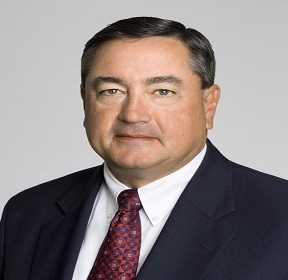
Mitch Simpler
Jaros, Baum & Bolles Consulting Engineers USATitle: How Does Antiviral Technology Stack Up Against Enhanced Ventilation and Filtration Measures?
Abstract:
How does the Grignard Pure antiviral technology stack up against enhanced ventilation and filtration measures for airborne virus mitigation? Grignard Pure is not intended to replace the enhanced ventilation and filtration strategies recommended by the American Society of Heating, Refrigerating, and Air-Conditioning Engineers (ASHRAE) and the U.S. Centers for Disease Control and Prevention (CDC). Grignard Pure has been deployed as an additional layer of protection for public health in the fight against the COVID-19 pandemic. The product’s label directs users to follow public health officials’ advice, including enhanced ventilation and filtration guidance.
Grignard Pure can be introduced into an indoor space either through application equipment installed in an HVAC system or by a free-standing dispersion unit. Engineering studies show that aerosol quickly and evenly disperses throughout an indoor space and does so in both small and large spaces. (New Amsterdam Theatre Grignard Pure Proof of Concept Part 1: Enhanced Ventilation Studies and JBB: Grignard Pure Deployment Case Study.) commercially available sensors can measure the level of aerosol in space. In order to ensure a consistent, safe, and efficacious concentration of Grignard Pure in the air, proprietary software can use commercially available sensor measurements to automatically direct the dispersion equipment to maintain Grignard Pure at the concentration level within the EPA-approved concentration range once the target level is reached.
Three criteria are critical to examine when comparing an antimicrobial air treatment with enhanced ventilation and filtration measures. First, the amount of reduction: What percentage of the circulating virus is eliminated? Second, the speed with which the measure works: How quickly does the measure remove virus particles? Third, the mechanism of action—removal versus inactivation of the virus particles: How does the measure achieve its effect? A case Study will be presented to demonstrate the engineering principles developed and executed in the delivery technology and effectiveness of the Grignard Pure deployment.
Biography:
Mitch Simpler joined JB&B, a global consulting engineering firm, in 1977 and currently serves as a partner after having served as Managing Partner from 2012- 2018. He has acted as project manager and partner-in-charge on life/health science institutions, health care facilities, high-rise office buildings, museums, residential and mixed-use buildings, as well as hotels. Simpler’s list of notable projects in the life science sector spans the past 45 years, including premier laboratory facilities and research centers in New York City, such as the Jerome L. Greene Science Center at the Columbia University Manhattanville campus, The East River Science Park in New York, the New York Genome Center, Mount Sinai’s Hess Center for Science and Medicine, Weill Cornell Medical College’s Belfer Research Building, MSK’s David H. Koch Center for Cancer Care and Rockefeller Research Laboratories, Cornell University’s Biotechnology Building, and NYU Langone Health’s Smilow Research Building and Skirball Institute of Biomolecular Medicine. His experience extends around the world to China, with the Innovation Center at Duke Kunshan University in Kunshan and the Rohm & Haas Research Center in Shanghai. Mr. Simpler is a fellow of the American Council of Engineering Companies (ACEC) and recently served as the National Chairman of ACEC. He is also a founding member and Co-Founder of NYC Builds Bio+.

Grishma Desai
Grignard Pure Company USATitle: Efficacy of Grignard Pure Against a Variety of Bioaerosols
Abstract:
The awareness of airborne transmission of infectious diseases has greatly increased during the recent COVID-19 pandemic. Laboratory studies have shown that the SARS-CoV-2 virus can remain viable for up to 16 hours in respiratory droplets with a diameter of 0.09µm. Grignard Pure® (GP) is a unique and proprietary blend of Triethylene Glycol (TEG) and inert ingredients designed for continuous antimicrobial treatment of air. GP received approval from the US EPA under its Section 18 Public Health Emergency Exemption program for use in seven states . Grignard Pure® has been tested by third party accredited labs for efficacy in the air and on hard surfaces against multiple microorganisms (gram positive bacteria, gram negative bacteria, enveloped viruses, non-enveloped virus, mycobacteria and mold endospores). Experiments measured the decrease in the airborne viable bioaerosol concentration in the presence of specified concentrations of GP from 60 to 90 minutes, accounting for both natural die-off and settling of the bioaerosols. Experiments were conducted with GP in its undiluted form where it was aerosolized in a control time release method utilizing a nebulization dispersion device. Settling slides were used to assess reduction of viable microorganism deposition onto surfaces. GP is consistently able to rapidly reduce viable bioaerosol concentration by 2-3 logs at GP concentrations of 0.02 mg/m3 to 0.5 mg/m3 (corresponding to TEG concentrations of 0.012 mg/m3 to 0.287 mg/m3) for a variety of microorganisms. In addition to being efficacious, GP is also safe to use. The safety of TEG, the active ingredient of GP has been evaluated by third party independent labs as well as the US EPA and FDA. The likelihood of adverse effects from continuous inhalation exposure to TEG resulting from the use of aerosolized GP is considered low. The assessment also indicated that acute, subacute/sub-chronic and chronic toxicity, genotoxicity and carcinogenicity are not expected. This TEG-based antimicrobial air treatment product tested shows high efficacy against a variety of bioaerosols and has a favorable safety profile. As a result, it can be used to reduce transmission of airborne infectious diseases in indoor public spaces.
Biography:
Grishma Desai is multifaceted Scientist and Quality Manager at Grignard Company LLC with experience in Biological Nutrient Removal (BNR), wastewater mineral removal and US EPA Pesticide Testing and Regulations. She has a Bachelor’s of Science in Biotechnology from Rutgers University, New Jersey, USA. During her eight years at Grignard Company, she has led multiple R&D efforts in new product development as well as regulatory compliance for products. In the past two years, Ms. Desai’s work has focused on developing, testing and obtaining regulatory approvals for Grignard Pure® – an airborne antimicrobial effective against MS2 Bacteriophage, a surrogate for the SARS-CoV-2 as well as other bioaerosols. Ms. Desai worked closely with Dr Katherine Ratliff and her team at the US EPA Office of Research and Development to evaluate the efficacy of Grignard Pure® in reducing airborne virus concentrations using a large-scale test chamber and a standardized testing approach. Ms. Desai recently submitted a paper titled “The efficiency of Grignard Pure to inactivate airborne SARS-CoV-2 surrogate” to a peer reviewed journal detailing the testing conducted on Grignard Pure at independent testing labs.

